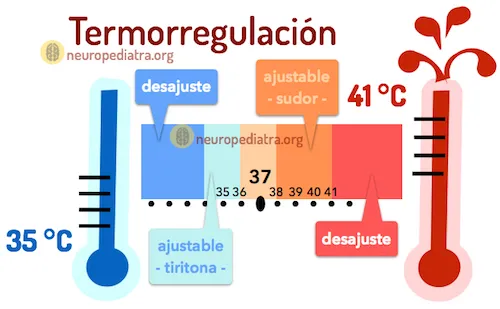It has been known for decades that low temperatures can trigger that specialized fat cells burn energy to produce heat, but in a new study, researchers from the University of California San Francisco (UCSF), in the United States, discovered a new route of productionHeat in fat cells that works by burning excess glucose in the blood, which suggests a new potential approach to treat metabolic disorders such as obesity and type 2 diabetes.
The findings, published on Monday in 'Nature Medicine', represent a paradigm shift in the scientific understanding of how mammals convert their heat reserves into heat, says principal researcher Shingo Kajimura, associate professor of cell and tissue biology at school at schoolof dentistry of the UCSF and member of the Diabetes Center of the UCSF.
All mammals, including humans, use white fat cells to store energy, but can also have brown fat reserves, burning the energy stored to produce heat.Human babies are born with brown fat as a natural defense against the cold and the animals that hibernate, such as bears, accumulate large brown fat reserves for the same reason.However, adult humans generally do not have much brown fat.
In 2015, the Kajimura laboratory identified a new type of fat in adult humans, the so -called "beige" fat, which exists in pockets inside fatty tissue and can convert white fat into brown fat in response to cold or other tensions.In follow -up studies, the laboratory showed that the most fat beige mice were protected against diabetes and diet -induced obesity: by burning calories to generate heat, rodents were more able to get rid of the excess of unhealthy white fat.However, the mechanism by which these cells convert heat to heat was a piece that was missing in the puzzle.
"Now we have found this new path by which beige fat cells produce heat," Kajimura says. ".When you are cold, your muscles initially tremble to produce heat, but with a longer exposure to low temperatures, your body needs other ways to keep hot.
For many years, researchers interested in understanding how our bodies convert heat stored in heat have studied the function of a protein called Decoupling Protein 1 (UCP1).This protein is present only in brown and beige fat cells, and works by redirecting energy flow in mitochondria, energy plants of our cells, so they produce heat instead of biologically available energy.
A mechanism preserved during evolution
In many mammals, UCP1 is responsible for producing heat in response to the needs of the environment without the need for muscle tremors: its activity is triggered with cold temperatures, as well as after supercharging.However, some species, such as pigs, do not have a functional UCP1 protein, but somehow they can still stay hot in cold environments, which led to Kajimura's laboratory to wonder if there could be another mechanism involved in the ability of fatBeige and brown to generate heat.
In previous studies, the team eliminated the UCP1 protein from mice with higher than normal beige fat levels and discovered that animals remained resistant to diabetes and diet -induced obesity, demonstrating that the beneficial effects of beige fatThey were completelyINDEPENDENTS OF UCP1."This was conceptually very surprising to us and for the field, because UCP1 has been the only thermogenic protein known for more than 20 years," says Kajimura.
Now, the main author of the Kenji Ikeda study and his colleagues found a new mechanism that beige fat cells can use to generate heat when exposed to cold temperatures, which implies activating a pair of proteins called SERCA2B and Rianodine Receiver 2 (Ryr2).
Normally, these proteins are responsible for controlling calcium availability, a key ion within fatty cells.When calcium levels are too high, SERCA2B can use some energy to pump additional calcium in storage sites inside the cell.Then, when calcium in the cell is low, Ryr2 acts as a valve to release some of these stored calcium reserves.
However, the Kajimura team discovered that in cold conditions the cells can activate both proteins at the same time.How to accelerate the engine of a car stepping on the accelerator and the brake at the same time, the main consequence is to generate a lot of heat and burn a lot of fuel, in this case glucose.
In fact, the researchers found that this process may burn so much glucose that the activity of SERCA2B in beige fat cells in mice affects the use of glucose throughout the body, which suggests possible applications for the prevention of type 2 diabetes, whichIt is believed that long -term elevations are triggered in blood glucose levels.
"Now that we have found that the beige fat burning glucose using SERCA2B, explains many things, 'says Kajimura-this is the reason why mice becomes diabetic when we reduce beige fat, but the interruption of UCP1 does not cause diabetesAnd it is the reason why mice are protected against diabetes in the presence of more beige fat. "
Experiments in isolated laboratory dishes of pork cells and Beige fat humanIn UCB1 they dominate human beige fat.
The discovery that beige fat has more than one mechanism to avoid the cold makes evolutionary sense, according to Kajimura."Thermoregulation is so important for life that there must be multiple mechanisms, as in pigs that do not have a functional UCP1," he emphasizes.


